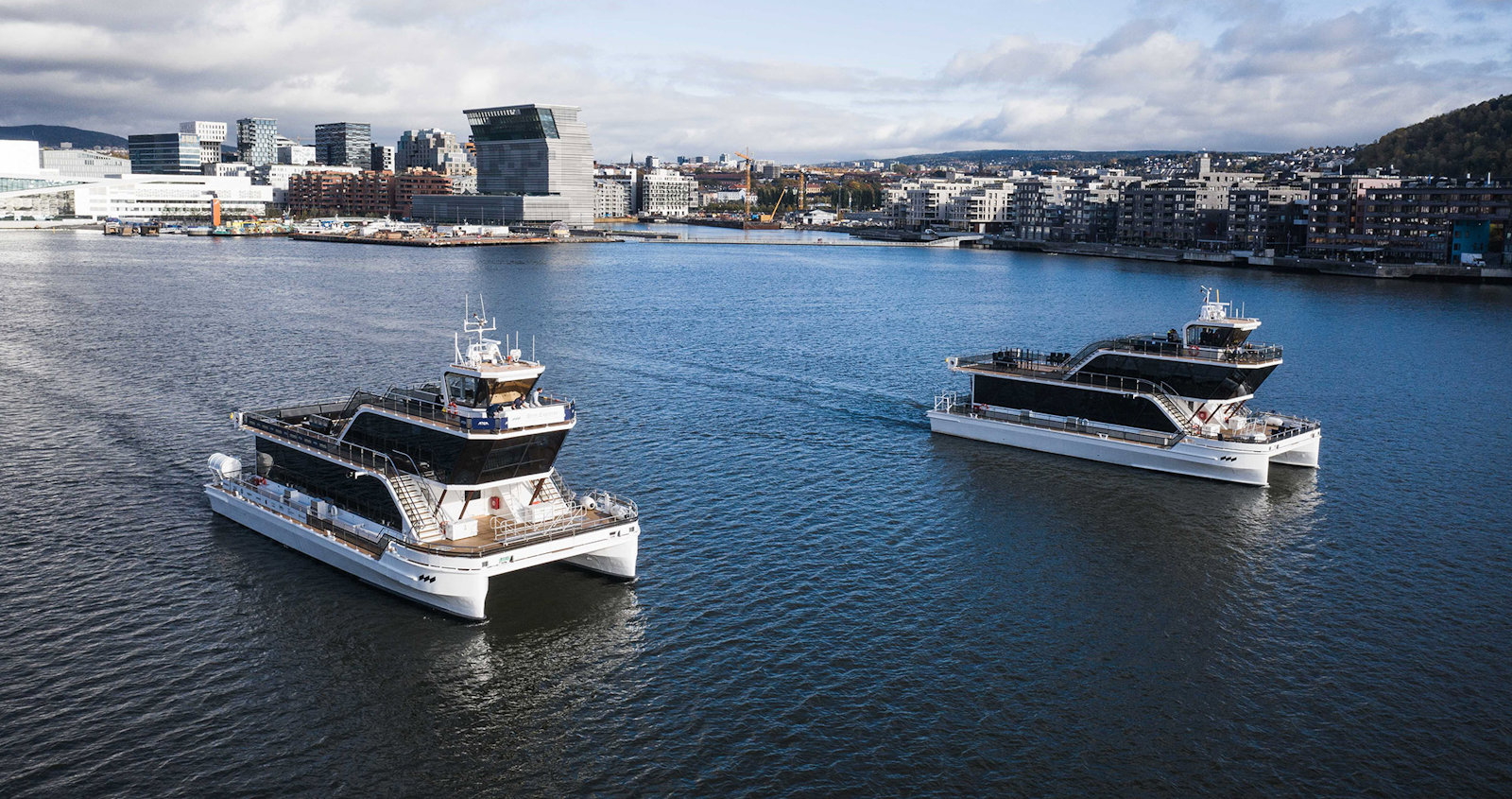Marine design for durability and experience
Norway-based Brim Explorer started from a passion for the ocean. While working in Arctic ocean tourism, Brim Explorer’s co-founders, Agnes Árnadóttir and Espen Larsen-Hakkebo, saw the challenges presented by polluting, noisy and poorly designed ships that lessened the guests’ experiences and harmed the environment.
With an idea and dedicated partners, they set out to build a ship unlike any the world has seen. In March 2018, Agnes and Espen teamed up with designer Einar Hareide, the shipyard Maritime Partner and a team of daring suppliers to build a unique platform for ocean experiences.
A year and a half later, with the first ship, Brim, and more to come, Brim Explorer is combining innovative climate technology and experience from the travel industry to create experiences that are truly unique and sustainable. They chose aluminium from Hydro.
“Our designer had experience using aluminium and suggested to use the unique properties to our advantage when developing Brim. Lightweight and with a lower footprint, this was a good fit to our hybrid-electric propulsion system,” says Espen.
Listen to the whole podcast:
Increased performance and stability with aluminium
When cruising for whale safaris in Northern Norway, Brim can use all-electric propulsion. This allows the passengers a unique, silent experience, compared with fishing boats with hammering diesel engines used elsewhere. The hybrid engine means Brim can switch to diesel when traveling longer distances.
“When the Covid situation hit us in 2020, we moved Brim, our first ship, to Oslo. At low speed, we can use our full-electric propulsion all the time and we didn’t refuel for many months,” says Agnes.
Market manager Thomas B. Svendsen in Hydro’s Marine & Offshore business has spent much time educating the industry on the use of aluminium in marine and offshore applications.
“When designers and engineers are attending universities, they learn using steel or composites – less about aluminium. This is a lost opportunity for the marine and offshore industry, as aluminium has many advantages over competing materials. Aluminium can be applied to almost any ship, from small to large, to get the advantage of weight saving, giving increased performance and stability,” says Thomas.

Reduced carbon footprint
When you add batteries to a vessel, the increased weight can be compensated for by using lightweight aluminium. If you also look at the carbon footprint, using recycled, low-carbon aluminium will significantly improve the vessel’s carbon footprint.
“Aluminium has some clear advantages over competing materials, like reduced corrosion in marine applications. It also has some disadvantages, like most materials. Designers and shipowners need to understand both the pros and cons,” says Thomas.
“What we have seen in Brim is the need for care when charging the vessels. By introducing current, in combination with scrap metal lying on the seabed, using proper anodes to compensate for the current is important,” says Espen.
After a year of operation, what is the experience of using aluminium in Brim?
“We are very happy with the two ships we have in operation and the use of aluminium as part of the design. We have two more on the drawing board, and we would like to build more in the future,” says Agnes.
Want to hear more about Brim's project? Listen to Agnes Árnadóttir, Espen Larsen-Hakkebo and Thomas Svendsen in our Hydro Talks podcast (you can also find us on Spotify, Apple and Google podcasts):
The podcast Hydro Talks sets out to explore the modern dilemmas for industry and society. How can we create a more viable society? How can we produce better while consuming less? What should investors expect? What kind of technology and innovation can we implement to work smarter? In Hydro Talks we try to make sense out of these dilemmas. Remember to subscribe!
